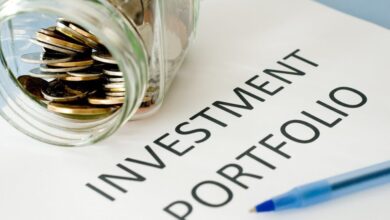Investment Basics: Risk, Return, and Diversification Explained

The concept of investing often conjures images of complicated stock charts, high-pressure trading floors, or financial jargon that seems inaccessible to the average person, leading many to keep their hard-earned savings sitting passively in low-interest accounts.
This hesitation stems from a fear of the unknown and, more acutely, a fear of losing money, which is a powerful psychological deterrent against taking the necessary steps toward building long-term wealth.
However, understanding the fundamentals of investing is not just for the elite; it is a fundamental requirement for anyone seeking to secure their future, outpace inflation, and achieve genuine financial independence.
Simply allowing money to sit idle ensures its purchasing power steadily erodes over time due to rising costs, meaning the money you have today will buy less tomorrow.
Investing is simply the act of putting your money to work, allowing it to generate returns and accelerate your journey toward financial goals like retirement, college funding, or major purchases.
Mastering the three pillars of investing—risk, return, and diversification—provides the essential framework for making informed decisions and transforming uncertainty into calculated opportunity.
I. The Pillar of Return: Why We Invest
The core motivation behind all investing is the pursuit of a return, which is the profit generated from the money you commit.
A. Defining Return
Return is the gain or loss generated from an investment over a specific period, typically expressed as a percentage of the initial investment. A positive return means your wealth has grown; a negative return means you have lost capital.
B. Two Primary Forms of Return
Returns generally come in two main types, which investors rely upon for growth.
- A. Capital Gains: This is the profit you make when you sell an investment (like a stock or property) for a higher price than you originally paid for it. This is the appreciation in the asset’s value.
- B. Income: This is the cash flow generated by the investment while you still own it, such as dividends from stocks, interest from bonds, or rental income from real estate.
C. The Goal: Outpacing Inflation
A crucial concept is that your investment return must be higher than the rate of inflation to truly increase your wealth. If inflation is 3% and your savings account only pays 1% interest, you are effectively losing 2% of your purchasing power annually. Investing is essential to ensure your money is growing in real terms.
D. Understanding Real Return
Your real return is the nominal return minus the inflation rate, which provides the clearest picture of how much your purchasing power has actually increased over the year.
II. The Pillar of Risk: Understanding the Trade-off

Risk is the necessary, unavoidable counterbalance to return; they are two sides of the same investment coin.
A. Defining Risk
Risk is the possibility that the actual return from an investment will be different from (and usually lower than) the expected return, including the potential for a complete loss of the original principal.
B. The Risk-Return Spectrum
There is a fundamental, almost universal relationship in finance: higher potential return requires taking on higher risk. Conservative investments (like government bonds) offer low potential returns but have very low risk, while aggressive investments (like individual stocks or cryptocurrencies) offer high potential returns but carry a significant chance of massive loss.
C. Market Risk vs. Specific Risk
It is important to differentiate between general market volatility and specific company failures.
- A. Market Risk (Systemic Risk): This is the risk that your investment value will drop due to factors affecting the entire economy or market (e.g., a recession, a pandemic, or a change in interest rates). This risk cannot be eliminated through diversification.
- B. Specific Risk (Unsystematic Risk): This is the risk associated with a single company, industry, or asset (e.g., a single company going bankrupt due to mismanagement). This risk can be mitigated through diversification.
D. Measuring Risk: Volatility
Investment risk is often measured by volatility, which is how sharply and frequently the value of an asset fluctuates. A highly volatile stock presents a high risk because its value could drop significantly overnight, forcing a panic sale at a loss.
E. Time Horizon and Risk Tolerance
Your time horizon (how long until you need the money) should dictate your risk level. Younger investors with decades until retirement can afford to take higher risks because they have time to recover from market dips. Investors nearing retirement should be much more conservative, prioritizing capital preservation.
III. The Pillar of Diversification: The Investor’s Shield
Diversification is the single most important strategy for managing risk, often called the only “free lunch” in finance because it mitigates risk without sacrificing potential return.
A. Defining Diversification
Diversification is the practice of spreading investments across various asset classes, industries, and geographical regions to reduce the impact of any single negative event on the overall portfolio. It is the concept of “not putting all your eggs in one basket.”
B. Diversifying Across Asset Classes
The most basic form of diversification is spreading money between non-correlated asset types that do not move in tandem with each other.
- A. Stocks/Equities: Represent ownership in companies (high risk/high return).
- B. Bonds/Fixed Income: Represent lending money to governments or corporations (low risk/moderate return).
- C. Cash/Cash Equivalents: Money held in high-yield savings accounts (very low risk/low return).
- D. Real Estate: Property investment (moderate risk/long-term return).
C. Diversifying Within an Asset Class
Even within stocks, you must diversify by industry and size to avoid catastrophic loss from a single sector collapse.
- A. Industry: Invest across technology, healthcare, energy, and finance.
- B. Geography: Invest in US, European, and emerging market stocks.
- C. Company Size: Invest in large-cap (large companies), mid-cap, and small-cap companies.
D. The Role of Index Funds and ETFs
For the average investor, the easiest and most effective way to achieve instant, massive diversification is by using Index Funds or Exchange-Traded Funds (ETFs). These single investments hold hundreds or even thousands of different stocks or bonds, automatically spreading your risk across the entire market.
E. Rebalancing
Diversification is not a one-time task. Rebalancing involves periodically adjusting your portfolio (e.g., annually) back to its target allocation (e.g., 80% stocks, 20% bonds). This ensures that risk does not creep too high if one asset class outperforms others.
IV. The Compounding Engine: Time is Your Greatest Asset
Understanding compound interest is crucial because it highlights why starting to invest as early as possible is the single best financial decision you can make.
A. Compounding Defined
Compounding is when the earnings generated by your investment are reinvested, and those reinvested earnings then generate their own earnings. This creates a powerful snowball effect where growth accelerates over time.
B. The Early Start Advantage
Because compounding is exponential, money invested in your twenties has vastly more time to grow than money invested in your forties, even if the later contributions are larger. Time in the market is often more important than timing the market.
C. The Cost of Delay
Delaying investment means you miss out on years of compounding growth. This results in the need to save significantly larger amounts later in life to catch up to those who started early, making the early years the most valuable investing period.
D. The Rule of 72
A simple way to estimate how long it will take for your money to double is to divide the number 72 by the investment’s expected annual rate of return. (Example: ).
V. Choosing Your Investment Vehicle
How you allocate your money depends on your goals, time horizon, and the risk/return profile you seek.
A. Stocks (Equities)
Represent a stake of ownership in a public company. High risk, high potential return. Best for long-term growth and younger investors.
B. Bonds (Fixed Income)
Represent a loan you make to a corporation or government entity. Lower risk, lower return. Best for capital preservation and balancing a portfolio.
C. Real Estate
Can be direct ownership of property or indirect investment through Real Estate Investment Trusts (REITs). Offers potential for income (rent) and capital appreciation, often serving as a strong diversifier against the stock market.
D. Mutual Funds and ETFs
Managed portfolios that pool money from many investors to buy a diversified basket of stocks, bonds, or other assets. These are the recommended starting point for most new investors due to their built-in diversification and low cost (especially index funds).
E. Cash and Equivalents
Money market accounts or high-yield savings accounts. Essential for emergency funds and money needed in the short term, prioritizing safety and liquidity over growth.
VI. Building Your Personal Investment Plan
Investing should be a methodical, disciplined process, not an emotional reaction to market news.
A. Define Your Financial Goals
Separate your goals by time horizon: Short-term (under 2 years), Mid-term (2-10 years), and Long-term (10+ years). Each goal should have a corresponding risk profile.
B. Determine Your Risk Tolerance
Be honest about how much volatility you can mentally handle. If a 10% market drop would cause you to panic and sell everything, your actual risk tolerance is lower than you think. Build a portfolio you can stick with during market downturns.
C. Allocate Your Assets
Create a target asset allocation based on your time horizon (e.g., a young investor might use 90% stocks/10% bonds; an older investor might use 60% stocks/40% bonds). Use diversified, low-cost index funds to execute this allocation.
D. Invest Consistently (Dollar-Cost Averaging)
Set up automatic monthly investments into your chosen funds. This practice, called dollar-cost averaging, ensures you buy fewer shares when prices are high and more shares when prices are low, reducing the risk of buying at the peak.
E. Automate and Ignore the Noise
Once your plan is set, automate your contributions and ignore the sensational market headlines. Long-term wealth is built through consistency and patience, not by frantically trading based on news alerts.
Conclusion
Investing is the essential discipline that allows your money to work for you, serving as the bridge between your current financial state and your ultimate goals.
Return is the reward, but it is inextricably linked to the risk you are willing to embrace. Diversification is the foundational tool that manages this risk, ensuring that a problem in one area doesn’t destroy your entire portfolio.
By harnessing the exponential power of compounding and investing consistently over time, you guarantee a more prosperous future. A successful investor focuses on the long game, prioritizes automation over emotion, and respects the unwavering principles of risk, return, and prudent diversification.





